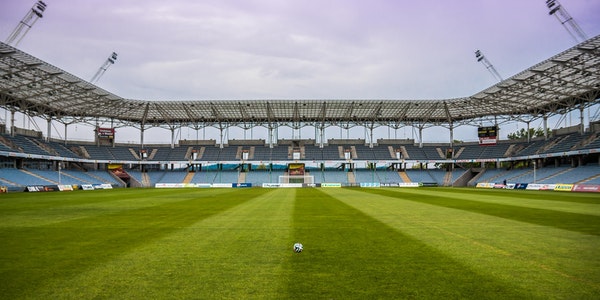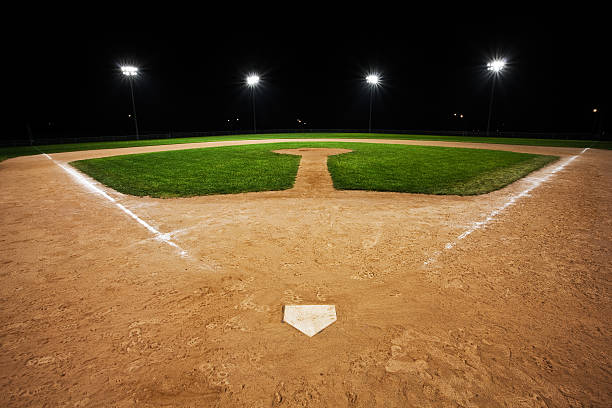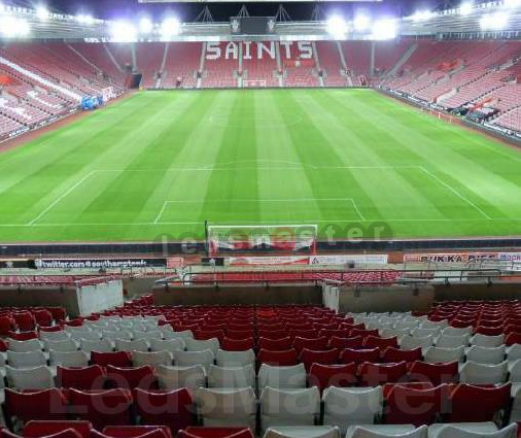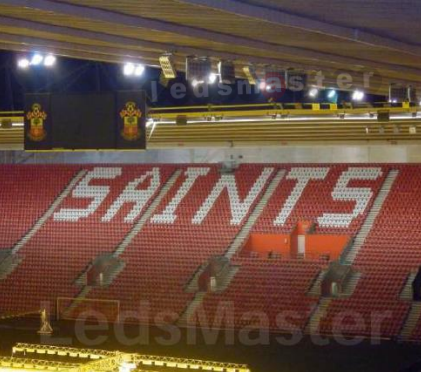I. Introduction
A. Brief overview of the importance of lighting in training facilities for athletes
Lighting plays a crucial role in training facilities for athletes as it directly impacts performance, safety, and overall well-being. Adequate lighting levels ensure optimal visibility, allowing athletes to focus on their training activities with precision and confidence. Moreover, lighting quality influences factors such as reaction times, depth perception, and visual comfort, all of which are essential for athletic performance and injury prevention. Additionally, proper lighting can support athletes’ circadian rhythms, promoting better sleep quality and recovery. In essence, lighting in training facilities is not just about illumination; it’s about creating an environment that maximizes athletic potential while prioritizing the health and safety of athletes.
B. Introduction to LED lighting technology and its benefits
LED (Light Emitting Diode) lighting technology has revolutionized the way we illuminate spaces, offering numerous benefits over traditional lighting sources. In recent years, LED lighting has emerged as the preferred choice for various applications, including training facilities for athletes. Its advanced features and versatility make it an ideal solution for creating optimal lighting environments tailored to the specific needs of athletes.
Benefits of LED Lighting:
- Energy Efficiency: LED lighting consumes significantly less energy than conventional lighting sources, resulting in substantial cost savings for training facilities. This efficiency not only reduces operational expenses but also aligns with sustainability goals by minimizing energy consumption and carbon footprint.
- Longevity and Durability: LED lighting fixtures have an impressive lifespan, lasting up to 25 times longer than traditional bulbs. This durability reduces the frequency of maintenance and replacement, leading to lower maintenance costs and minimal disruptions to training schedules.
- Customizable Lighting Solutions: LED technology allows for precise control over color temperature, intensity, and distribution of light. Training facilities can customize lighting scenarios to mimic natural daylight, create specific ambiance, or adjust lighting levels according to different training activities, enhancing performance and comfort for athletes.
- Flicker-Free Operation: Unlike some traditional lighting sources, LED lights provide stable illumination without flickering. This flicker-free operation ensures visual comfort and eliminates potential distractions during training sessions, promoting focus and concentration among athletes.
- Instantaneous Start-Up: LED lighting reaches full brightness instantly upon switching on, eliminating any warm-up time. This instantaneous start-up enhances convenience and flexibility in training facility operations, allowing for seamless transitions between different activities.
- Environmentally Friendly: LED lighting is free from hazardous materials such as mercury, making it environmentally friendly and safe for disposal. Its energy-efficient design also contributes to reducing greenhouse gas emissions and environmental impact, aligning with sustainability initiatives.
Conclusion: In summary, LED lighting technology offers a myriad of benefits that make it an ideal choice for training facilities for athletes. From energy efficiency and longevity to customizable lighting solutions and environmental sustainability, LED lighting enhances performance, safety, and overall well-being in athletic environments. Embracing LED technology represents a significant step towards creating modern, efficient, and athlete-centric training facilities.
II. Traditional Lighting Challenges in Training Facilities
A. Issues with conventional lighting systems
- Inefficient Energy Consumption: Traditional lighting systems, such as incandescent or fluorescent bulbs, are notorious for their high energy consumption. They convert a significant portion of energy into heat rather than light, resulting in wasted energy and increased utility costs for training facilities.
- Limited Lifespan: Conventional bulbs have relatively short lifespans compared to LED lights. Incandescent bulbs, for example, typically last only around 1,000 hours, while fluorescent bulbs may last up to 10,000 hours. This short lifespan necessitates frequent replacements, leading to increased maintenance efforts and costs.
- Lack of Customization: Traditional lighting systems often lack the flexibility to adjust color temperature, intensity, or distribution of light. This limitation makes it challenging to create tailored lighting environments optimized for different training activities and athlete needs.
- Flicker and Glare: Some conventional lighting sources, particularly fluorescent lights, are prone to flickering and glare, which can cause discomfort and visual strain for athletes. Flickering lights can also disrupt concentration and performance during training sessions, leading to suboptimal results.
- Slow Start-Up Time: Certain traditional lighting systems, such as fluorescent tubes, require a warm-up period to reach full brightness after being turned on. This delay in start-up can be inconvenient and inefficient, especially in dynamic training environments where quick adjustments are necessary.
- Environmental Impact: Conventional lighting systems often contain hazardous materials like mercury, posing environmental risks during disposal. Additionally, their high energy consumption contributes to increased greenhouse gas emissions and environmental degradation, exacerbating the carbon footprint of training facilities.
- Maintenance Challenges: Maintaining traditional lighting systems involves regular bulb replacements, ballast checks, and cleaning to ensure optimal performance. These maintenance tasks not only incur additional costs but also disrupt training schedules and facility operations.
Overall, the limitations and inefficiencies of conventional lighting systems underscore the need for modern alternatives like LED technology, which offer superior energy efficiency, longevity, customization options, and environmental sustainability for training facilities.
B. Limitations in meeting the specific lighting needs of athletes
- Inadequate Light Quality: Traditional lighting systems often struggle to provide the high-quality light required for athletic training. Poor color rendering and uneven light distribution can compromise visibility and hinder athletes’ ability to accurately perceive their surroundings, impacting performance and safety.
- Insufficient Intensity Control: Conventional lighting fixtures may lack the ability to adjust light intensity according to different training activities and preferences. Athletes may require varying levels of illumination for activities such as strength training, agility drills, or visual analysis of technique, and a one-size-fits-all approach to lighting intensity may not suffice.
- Limited Color Temperature Options: The color temperature of light can significantly influence the mood, alertness, and visual comfort of athletes. Traditional lighting sources typically offer limited options for color temperature adjustment, making it challenging to create environments optimized for different training scenarios, such as warm, inviting spaces for recovery or cool, stimulating environments for high-intensity workouts.
- Inflexible Lighting Control Systems: Conventional lighting control systems may be cumbersome to operate and lack the flexibility to adapt to changing needs or preferences. Athletes and coaches may require dynamic lighting scenarios that align with training objectives, but outdated control systems may struggle to deliver timely adjustments or fine-tuned lighting effects.
- Inconsistent Lighting Performance: Over time, traditional lighting fixtures can experience degradation in performance, resulting in reduced light output, color shifting, or increased flickering. These inconsistencies can undermine the reliability and effectiveness of lighting in training facilities, impacting athletes’ training experiences and outcomes.
- Challenges in Circadian Rhythm Management: Adequate lighting plays a crucial role in regulating athletes’ circadian rhythms, influencing sleep-wake cycles, energy levels, and performance. However, traditional lighting systems may not provide the optimal spectrum and intensity of light necessary to support circadian health, potentially leading to disruptions in sleep patterns and recovery.
Addressing these limitations requires a holistic approach to lighting design and implementation in training facilities, leveraging advanced technologies such as LED lighting systems that offer superior quality, flexibility, and controllability to meet the specific needs and preferences of athletes and coaches.
C. Energy inefficiency and high maintenance costs
Energy inefficiency and high maintenance costs are significant drawbacks associated with conventional lighting systems in training facilities for athletes. These limitations pose challenges to facility managers and stakeholders, impacting both operational expenses and the overall sustainability of the facility. Here’s a breakdown of these issues:
- Energy Inefficiency:
-
- Traditional lighting sources, such as incandescent and fluorescent bulbs, are notorious for their poor energy efficiency. They convert a significant portion of electricity into heat rather than light, resulting in wasted energy and higher utility bills.
- Training facilities often require extensive lighting to maintain adequate visibility across various spaces, including gymnasiums, training rooms, and indoor tracks. The inefficient energy consumption of conventional lighting systems contributes to increased operational costs and environmental impact.
- High Maintenance Costs:
-
- Conventional lighting systems require regular maintenance to ensure optimal performance and safety. This includes tasks such as bulb replacements, cleaning fixtures, and repairing or replacing faulty components.
- The labor and material costs associated with maintenance can quickly add up, especially in large training facilities with numerous lighting fixtures. High maintenance requirements not only strain the facility’s budget but also disrupt training schedules and facility operations.
- Short Lifespan of Bulbs:
-
- Incandescent and fluorescent bulbs have relatively short lifespans compared to modern LED lighting solutions. Frequent bulb replacements are necessary to prevent disruptions caused by burnt-out bulbs and maintain consistent lighting levels.
- The need for frequent replacements increases maintenance costs and poses logistical challenges for facility managers, who must coordinate procurement, scheduling, and installation of new bulbs.
- Environmental Impact:
-
- The energy inefficiency of conventional lighting systems contributes to higher greenhouse gas emissions and environmental degradation. Training facilities that rely on outdated lighting technology have a larger carbon footprint, undermining sustainability efforts and environmental stewardship.
- Additionally, the disposal of spent bulbs containing hazardous materials, such as mercury in fluorescent lamps, poses environmental risks and requires proper handling and disposal procedures.
Addressing these challenges requires a transition to more energy-efficient and low-maintenance lighting solutions, such as LED technology. LED lighting offers significant advantages in terms of energy efficiency, longevity, and reduced maintenance requirements, helping training facilities optimize operational costs, enhance sustainability, and create a better environment for athletes and staff.
III. LED Lighting Innovations
A. Advantages of LED lighting for training facilities
1. Customizable lighting solutions
Customizable lighting solutions offer training facilities the flexibility to tailor lighting environments according to specific needs, activities, and preferences. These solutions, often facilitated by advanced technologies like LED lighting systems and smart controls, provide numerous benefits for athletes, coaches, and facility managers. Here’s an overview of the key features and advantages of customizable lighting solutions:
- Adjustable Color Temperature: Customizable lighting systems allow for the adjustment of color temperature, enabling facilities to create different atmospheres and support various activities. Warm light can create a cozy ambiance for relaxation and recovery, while cool light enhances focus and alertness during intense training sessions.
- Variable Intensity Control: Facilities can adjust the intensity of lighting to suit different tasks and preferences. High-intensity lighting may be desirable for activities that require precision and visibility, such as weightlifting or agility drills, while lower intensity levels can promote relaxation and reduce glare during recovery periods.
- Dynamic Lighting Scenes: Smart lighting controls enable the creation of dynamic lighting scenes that change based on time of day, activity type, or user input. For example, facilities can program lighting presets for different sports, training phases, or events, enhancing the overall experience and optimizing performance outcomes.
- Personalized Settings: Athletes and coaches may have individual preferences for lighting conditions based on factors like visual comfort, mood, and performance goals. Customizable lighting solutions allow users to personalize their lighting settings, empowering them to create environments that support their unique needs and preferences.
- Adaptive Lighting Control: Some advanced lighting systems incorporate sensors and automation capabilities to adjust lighting in real-time based on environmental conditions, occupancy, or user behavior. Adaptive lighting control ensures optimal lighting levels and energy efficiency while minimizing manual intervention and maximizing user comfort.
- Integration with Smart Technologies: Customizable lighting solutions can integrate with other smart technologies and building systems, such as HVAC, security, and audiovisual systems, to create cohesive and intelligent facility environments. This integration enables seamless control and coordination of various systems, enhancing overall efficiency and user experience.
(To Be Continued)






